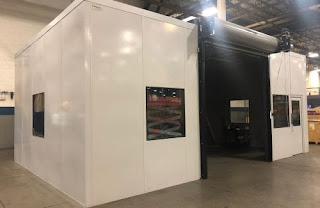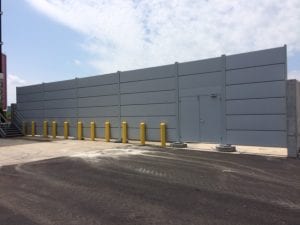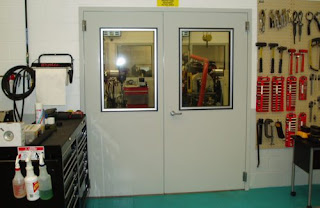What are inplant acoustic enclosures?
Inplant acoustic enclosures enclose noisy equipment in a chamber or room. For optimal acoustic performance, the exterior of the enclosure should be made with thick and robust material like galvanized steel while the interiors should be covered with absorbent material like acoustic wool. To prevent noise from escaping through the ventilation system, the air outlets and inlets should be fitted with silencers. An enclosure also comes with acoustic windows and doors, acoustic tunnels at the exit and entrance of the conveyors and utmost reduction of openings.
What kind of noise control solutions you are looking for?
To calculate the desired soundproofing, the sound created by the machinery can be measured by using a sound level meter. Ideally, the noise control solutions should lessen noise levels below 85 dB, which is the legal limit in most of the Canadian provinces.
What are the dimensions of mechanical room noise?
The exterior and interior dimensions of the mechanical room noise should be determined. Will any operators be working on it? Is it a partial or complete enclosure?
All kinds of contact between the inplant acoustic enclosures and the machinery should be avoided to maintain the acoustic performance of the enclosure.
Do you have to safeguard the soundproof enclosures from other aspects?
In many plants, noise is the only dangerous element present. The mining and the pulp and paper industries are frequently struggling with high levels of humidity and intense heat, dust, chemical exposure and also debris being blown away over the enclosure. These risks can be detrimental to buildings that are not strong enough. The design of customized noise control services enables you to adapt the engineering and the preference of materials to the environment of your factory which will enhance the durability of the sound enclosure to 25 years and more.




Comments
Post a Comment